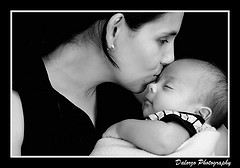
Last summer, I wrote an article for the magazine New Scientist about a bold new initiative to provide low-cost in vitro fertilization—for as little as $300 per cycle—to poor women in developing countries. The article, entitled Cheap IVF offers hope to childless millions, described initiatives by the Swiss-based Low Cost IVF Foundation and the European Society of Human Reproduction and Embryology (ESHRE) to offer IVF and other assisted reproductive technologies (ART) to women in Africa and elsewhere who cannot afford the the procedures. The need is great: some ten to 30 percent of African couples are infertile, often as the result of untreated sexually-transmitted diseases or post-delivery pelvic infections. Childless African women are often branded with a terrible stigma, facing public ridicule, abandonment or divorce.
My biggest surprise lay not in reporting the story, which was inspiring, but in reading the online comments after the article was published. Many of them were vituperative, asking why women in Africa, a continent with a high birth rate, deserved such technologies. Those were the mild remarks: others were outright racist. (In fact, the United Nations predicts that the number of children per woman in Africa is predicted to decline to less than three by 2050.) Even in the west, though, infertility is perceived as a “socially constructed need,” rather than a medical disorder. That could explain why in vitro fertilization is almost never subsidized in the U.S., costing couples $12,000 per cycle or more. That puts it out of the reach of many, and as anyone who has gone through multiple rounds of IVF can attest, the process can be horrendously expensive and stressful.
A new paper published in Human Reproduction Update by representatives of ESHRE suggests a different perspective. Instead of asking couples to invest large lump sums in ART—up to half their annual income in some cases—the authors suggest that governments should subsidize ART because it makes good fiscal sense.To put it simply, a government investing 15,000 euros to help a couple conceive a single IVF child born in 2005 will reap 127,000 euros in net tax revenue over the course of that individual’s life – an eight-fold return on investment.
This may sound odd to Americans, raised as they are on the religion of free enterprise. But in fact many governments already subsidize IVF. In Australia, public funding is generous and unrestricted. In Belgium, where the cost of one cycle is a relatively low 2400 euros, couples can undergo up to six rounds of treatment with the aid of public financing. Only one embryo is implanted in the first two cycles (for women under 36) which reduces the incidence of high-risk multiple pregnancies to less than ten percent, without substantially affecting the overall pregnancy rate.
Lest readers assume that subsidizing assisted reproduction will place an undue burden on healthcare systems, the authors point out that ART typically represents less than 0.25 percent of total national healthcare expenditure in countries surveyed. By contrast, obesity accounts for 10 percent and 2-4 percent of total healthcare spending in the U.S. and Europe, respectively.
For infertile couples who yearn for a child, assisted reproductive technology can offer hope. When it is successful, the outcome can feel miraculous. Now we know that subsidizing ART is good fiscal policy too. As the authors conclude, “Given the high estimated return on investment for ART children, it makes clinical as well as economic sense to provide affordable treatment to those who need it.”
I find this article enlightening but, by the same token, disturbing. By the end of your sentence, “new initiative to provide low-cost in vitro fertilization—for as little as $300 per cycle—to poor women in developing countries” I was shaking my head. It certainly seems that in developing countries (I am currently living in one though I am a US citizen) there is already an abundance of mouths and too little food. Except for alleviating the social stigma attached to being childless, I can not see any great benefit to adding to socio-ecomonic woes. Your statistic of benefits to a country also seemed misleading (“…a government investing 15,000 euros to help a couple conceive a single IVF child born in 2005 will reap 127,000 euros in net tax revenue over the course of that individual’s life – an eight-fold return on investment.) should not have been based in Euros (as there are no developing countries in Europe) but rather taken from the tax statistics of an African country and based on their per capita tax revenue from those countries.
Thanks for taking the time to read this!
Sara,
Thank you for your comments. In my post I was actually referring to two separate projects: the first, promoted by the Low-Cost IVF Foundation and ESHRE, aims to provide low-cost IVF and ART to couples in developing countries. The second item referred to a paper in which ESHRE representatives argue that IVF and ART are good investments in Europe and the U.S., hence the figures in euros.
As I mentioned in my post, I had many negative comments in response to my original New Scientist article on Low-Cost IVF. The general feeling seems to be that many African countries are poor and over-populated, so individual childless women living on the continent don’t deserve the benefits of ART. But I am not sure why African women are less deserving of these treatments than women in the West.
In my New Scientist article, I interviewed a woman in Khartoum whose husband had considered divorcing her because she hadn’t had a child. In fact, the problem was the husband’s low sperm count. They were treated with intra-uterine insemination (IUI), a standard low-cost treatment, and last September the woman gave birth to a boy. The husband said, “I feel as if I died and got up again to life.”